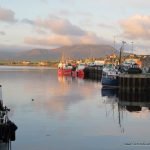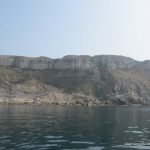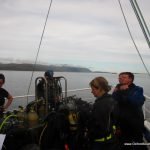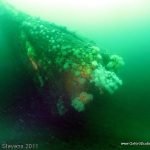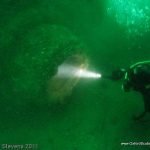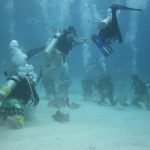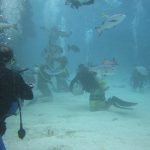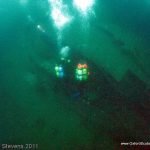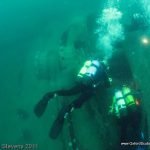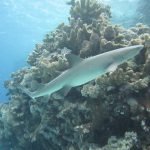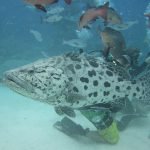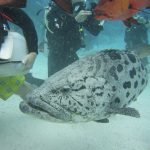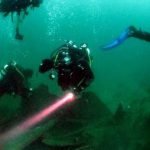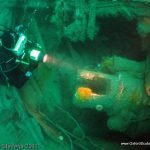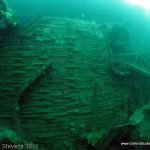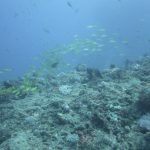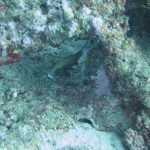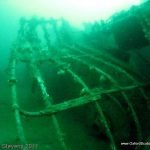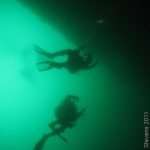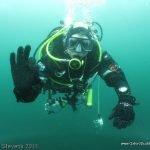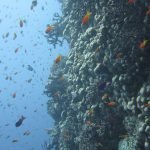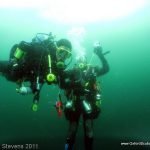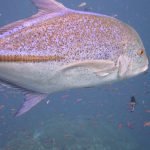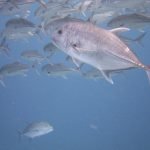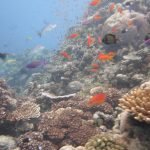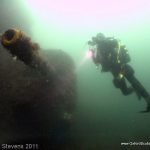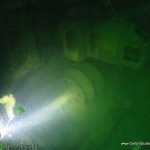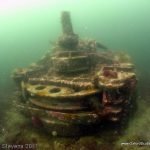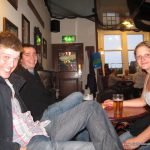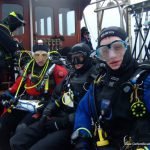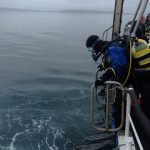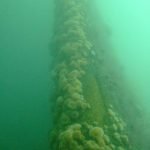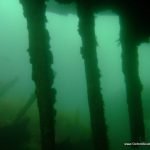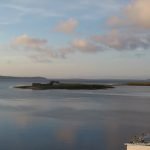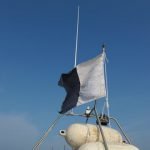Scapa Flow 2011 Trip Report
 July 24th – August 5th 2011
July 24th – August 5th 2011
A two week stint in Scapa Flow is any British diver’s dream. Frequently suggested as the best diving the UK has to offer it should certainly be on your to-do list if you haven’t already been, and almost certainly on your ‘must return’ list if you’ve experienced it already.
Once you’ve recovered from the drive – from Oxford it takes about 11 hours + the ferry crossing to reach Stromness in Orkney, far north of Scotland. It really does make sense to fly, but only if you can get someone else to take your kit – excess dive baggage is apparently frequently discarded when planes are overweighted. The drive beyond Glasgow is quite scenic though, as is the ferry from Scrabster to Stromness, so that helps. It is certainly even better on the way south.
The main attraction of Scapa for divers is what remains of the WWI German Imperial Fleet, which was scuttled a few days before the signing of the Treaty of Versailles in 1919. The history of this event is well documented elsewhere on the web (e.g. on Wikipedia) so I won’t go into it here. Add to that blockships (WWI and WWII) and the WWII Churchill Barriers (used to prevent ships and U-boats entering the Flow) and there are numerous sites to get stuck into. Suddenly two weeks doesn’t seem so long… and for those of us (myself included) who only had a week every dive was important!
The Charter
I was on the second week, which I think went pretty much the same way as the first. We chartered Emily Turton’s boat Radiant Queen, a 52ft Ring Netter. The boat was extremely thoughtfully set out, spotless, and ran like clockwork – there was something of the Egyptian liveaboard experience about it, albeit without the sleeping quarters. There is a dry lounge with comfy seating where Emily gave excellent multimedia dive briefings and advised us on how to get the best out of the wrecks. After a dive we would descend into the wet room, hang up our drysuits and move into the warm changing room to remove damp undersuits and use the cleanest loo I have ever seen on a dive boat. Emily claims to clean this three times a day – it shows! The lunches served on the boat are fantastic and highly recommended. I have never seen an oven on a UK dive boat before, and certainly never seen freshly cooked scones, sticky toffee pudding or lemon drizzle cake produced from it after a dive!
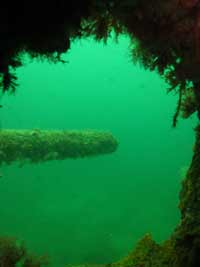 The Diving
The Diving
Over the week we dived all seven of the remaining German WWI fleet: three cruisers and four battleships. The debate will rage about which ships merit the most attention, but my personal favourites were the Konig, Coln and Kron Prinz Wilhelm. The Markgraf was just beyond my depth grade so I will have to leave that for another time. Our skipper Emily is passionate about this particular wreck, so it is now on my to-do list. Below are some highlights from individual wrecks.
The Brummer
Conditions in the second week were deteriorating as we went on, but vis was generally in the range 5-8m – a bit less than I had hoped for but not unbearable. We were perhaps more narked than otherwise – certainly on the intimidating light cruiser Brummer, which few of our group of divers enjoyed. Its twisted, flimsy, wobbly, silt-covered structure is the most deteriorated of all the fleet and certainly didn’t inspire confidence.
The Coln
By contrast the Coln – another cruiser – seemed light and airy, although still imposing with its complete 5.9 inch guns, armoured conning tower and largely intact structure. With a good torch it was possible to get a decent feel for it. On our second dive on it (and at the end of a week of c.35m diving) some of us were just about able to complete a the double swim-through – entering the bow and then the stern sections. The latter of these enables you to peek through a hatch and see the auxilliary steering wheel where the ship could have been controlled below decks by some poor soul.
The Konig
I’m certain I got more out of this dive in large part thanks to Emily’s briefing. Athough this is the most brutally salvaged battleship it is therefore the only one in which certain features can be seen without extreme (and maybe impossible) penetration: the 1′ thick strongroom armoured wall; the exposed base of a gun turret where munitions would have been loaded below decks; the boiler and other engine parts (I am not an engineer…). Add to this a swim through – pick your own – and you have a really enjoyable dive. Just be aware that if you find some line leading into a hole and follow it you may get a nasty surprise. Ask your skipper for details…
The Kronprinz Wilhelm
I think this has to be my favourite battleship. With intact 12 inch guns, intact rudders, easily reconizable hull shape and a great swim-through. This really feels like a wreck you could explore a fair amount of as a sport diver, without having to lay line and without fear of getting lost/trapped.
The Tabarka
One of the blockships in Burra Sound, The Tabarka must be dived on slack water as the currents here are vicious. With Emily’s instruction ‘leave when the fish start swimming backwards’ ringing in our ears we made a negative entry and immediately penetrated the wreck. Inside the vis is fantastic, with no silt and lots of light creeping in. It seemed like light relief after several days of deep dark diving to be somewhere so shallow and inviting. There are complete boilers, brass, and lots of little swim-throughs to keep you entertained. There’s enough room for somersaults in the bow section if you are that way inclined. The current on exit makes for an interesting ascent – I’m glad we left when we did!
Techie?
According to one experienced member of our group this was by far the most technical diving trip he had been on with the club. Almost the entire group dived on Nitrox as a bottom gas all week – usually with a full strength mix on the first dive and an air top-up on the second. The other divers switched to Nitrox for decompression stops. Most of us also used twinsets. There is certainly growing interest among some club members in deeper, more challenging, more technical diving.
DAN Project Dive Exploration
On arrival, we were asked by DAN intern Krista Landowski if we would take part in an ongoing DAN (Divers Alert Network) study of divers. I’m happy to report that none of our divers were involved in any incidents during the week, but I hope our data (we had sensors attached to us on every dive) will help DAN as they try to improve our understanding of decompression sickness.
Thanks
Finally a big thank you to our skipper Emily; to Stuart Allen for organising the trip; to Ian Banton for running the first week; and to everyone who came for making this a week to remember.
Photo gallery to follow soon….

